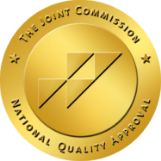
Fetal Alcohol Syndrome
The Dangers of Drinking While Pregnant
Drinking during pregnancy may seem deceptively innocent. Being surrounded by alcohol at bars and restaurants makes one wonder how harmful one drink can be. However, drinking at any time during pregnancy and in any amount increases the risk for fetal alcohol syndrome.
What is Fetal Alcohol Syndrome?
When a pregnant woman consumes alcohol, she can give birth to a child with fetal alcohol disorder (FASD). FASD is an umbrella term used to describe a range of fetal anomalies related to alcohol:
- alcohol-related congenital disabilities
- alcohol-related neurodevelopmental disorder
- fetal alcohol syndrome (FAS)
- partial fetal alcohol syndrome
Out of all types of FASDs, fetal alcohol syndrome (FAS) is the most severe and often permanent. Issues with fetal alcohol syndrome can affect hearing, memory, attention, vision, and speech.1 The effects of fetal alcohol syndrome can also show up as cognitive problems such as processing information and communicating appropriately. Although most people think of FAS affecting babies, children born with signs of fetal alcohol syndrome grow up into adults with permanent disorders and disabilities.
Causes of FAS
Although adults can process reasonable amounts of alcohol quickly, a fetus lacks this ability. The placenta does not filter alcohol, so when a pregnant woman consumes alcohol, it travels across the fetus\'s placental barrier.
Alcohol is more concentrated for a fetus and can keep it from obtaining much-needed oxygen and nutrients. A lack of nutrients during growth can result in abnormal features, especially in vital organs. Women in their early stages of pregnancy may be unaware that they\'re carrying a fetus, and it\'s at this time when alcohol can do the most harm to it.
Although the first three months of pregnancy are the most vulnerable time for a fetus, alcohol can harm a fetus at any time throughout pregnancy. According to the American Academy of Pediatrics (AAP), \"there is no safe trimester to drink alcohol.\"2
Prevention of Fetal Alcohol Syndrome
FAS can be prevented by avoiding alcohol consumption throughout pregnancy. Women at a childbearing age might drink socially, not knowing that they\'re carrying a fetus. To prevent the effects of FAS, a woman who wishes to become pregnant or might be pregnant soon should avoid alcohol altogether.
For women of childbearing age with alcohol addiction, the situation is direr. Consuming significant amounts of alcohol while pregnant can have severe consequences for the fetus; thus, women with alcohol problems who are looking to become pregnant should seek assistance to treat their alcohol addiction.
Effects of Fetal Alcohol Syndrome
FAS symptoms differ from person to person and cover a broad range of issues. Some symptoms are mild to moderate, while others can be severe and significantly impair functioning.3 A few signs of fetal alcohol syndrome include:
- Malformed fingers, toes, or limbs
- Low weight and height
- Small head
- Poor coordination
- Developmental delays
- Heart problems
- Kidney abnormalities
- Brain abnormalities
- Intellectual disabilities
- Poor adaptive skills
- Learning disabilities
- Speech problems
- Poor motor skills
- Hyperactivity
- Poor judgment
- Mood swings
- Abnormal facial features (such as a thin upper lid or wide-set eyes)
The brain and central nervous system (CNS) are particularly affected by alcohol during the prenatal period. Alcohol can significantly damage portions of the fetal brain. This damage can lead to lifelong problems, including functional impairments and cognitive deficiencies. FAS brain impairments can also manifest as behavioral issues and social skills deficits, creating hardships later in adulthood with personal and career relationships.
FAS can result in recognizable physical traits. For example, facial abnormalities such as wide-set eyes, thin upper lips, a flat nose bridge, and smooth philtrum (the groove running from the nostrils to the upper lip) are known as \"fetal alcohol syndrome face.\" In some people with FAS, the eyes have skinfolds in the inner corner of the eyes, called epicanthal folds, combined with wide-spaced eyes, known as \"fetal alcohol eyes.\"
How is FAS Diagnosed?
The earlier FAS is diagnosed, the sooner interventions can begin and the better the outcomes will be. A woman must speak honestly with her physician if she knows her child was exposed to alcohol. There\'s no medical or laboratory test that can determine if a person has FAS; diagnosis depends on a thorough physical exam by a health professional to see if a person meets specific physical, developmental, and behavioral criteria.
Because FAS is part of a group of conditions, it\'s vital to differentiate FAS from other FASDs. For example, people with an alcohol-related neurodevelopmental disorder (ARND) may have challenges with memory, attention, and learning. In contrast, people with alcohol-related congenital disabilities have physical issues such as bone and kidney problems. Interventions would differ for each condition.
Recognized in 2013, another FASD -- Neurobehavioral Disorder Associated with Prenatal Alcohol Exposure (ND-PAE) -- requires the child\'s mother to have a history of specific alcohol consumption criteria. The mother must have 13 alcoholic drinks within any 30 days of her pregnancy or more than two drinks in one sitting. Children with ND-PAE typically have challenges in thinking, memory, behavioral problems as well as difficulty with daily living such as dressing, bathing, and socially interacting.4
Fetal Alcohol Syndrome Statistics
Using medical records, the Centers for Disease Control and Prevention (CDC) estimates that 0.2 to 1.5 babies out of 1,000 births have FAS. FAS is found in 0.3 out of 1,000 children ages 7-9. In-person assessments in studies with children report much higher estimates (6-9 out of 1,000).5 A troubling report published in the Morbidity and Mortality Weekly Report (MMWR) noted that binge drinking has increased among pregnant women. Approximately 11.3% of pregnant women in 2018 stated that they consumed one drink of alcohol within the past 30 days (up from 9.2% in 2011) and 4.0% of pregnant women in 2018 stated they consumed four or more drinks on one occasion within the past 30 days (up from 2.5% in 2011).6
Fetal Alcohol Syndrome in Adults
Although FAS symptoms present themselves differently in every case, recent studies show that all FASD may contribute to life adversity and instability. A 2019 study of prisoners found a high rate of FASD (17.5%) in the sample of 80 prisoners. The understanding is that the developmental delays, behavioral challenges, and learning deficits resulting from FASD may lead to poor judgment and unstable environments. Although not all adults with FASD end up incarcerated or with legal encumbrances, FASD may increase the risk for adverse life events.
Fetal Alcohol Syndrome Treatment
Unfortunately, there\'s no cure for FAS or FASDs. However, early detection and intervention can reduce its detrimental effects on a child\'s life. Health professionals and counselors can offer children and their families the following:
- Speech-language Therapy
- Mental Health Counseling
- Physical Therapy
- Occupational Therapy
- Social Skills Training
- Caregiver Classes
- Anxiety
- Attention deficits
- Sleep disturbances
- Depression
- Aggressive or violent behavior
- Medications for the child to treat:
- Education Services, including Early Intervention
Learning to manage and live with the effects of FAS may take both traditional and alternative interventions. Though parents should always inquire with their physician before starting alternative fetal alcohol syndrome treatments, holistic tactics such as yoga, art or music therapy, aromatherapy, and biofeedback can help children control their emotions and behaviors. Since there\'s no cure for any FASDs, the ideal choice would be to avoid alcohol when pregnant to prevent such symptoms.
Resources
- https://www.aap.org/en-us/advocacy-and-policy/aap-health-initiatives/fetal-alcohol-spectrum-disorders-toolkit/Pages/default.aspx
- https://pediatrics.aappublications.org/content/136/5/e1395
- https://kidshealth.org/en/parents/fas.html
- https://pediatrics.aappublications.org/content/138/4/e20151553
- https://www.cdc.gov/ncbddd/fasd/data.html
- https://www.cdc.gov/ncbddd/fasd/features/alcohol-use-during-pregnancy.html

